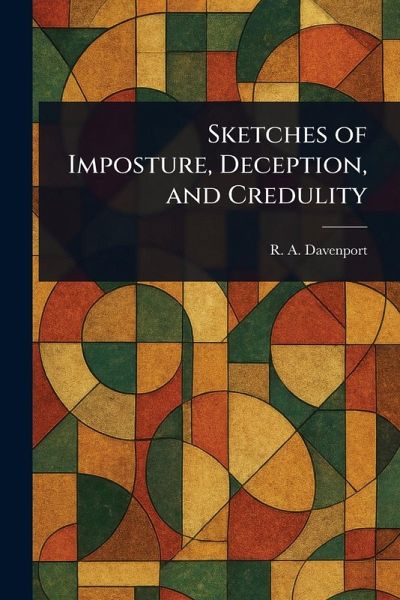
Sketches of Imposture, Deception, and Credulity

PAYBACK Punkte
9 °P sammeln!
Explore the fascinating world of "Sketches of Imposture, Deception, and Credulity" by Richard Alfred Davenport, a compelling exploration of hoaxes, imposters, and the art of deception throughout history. This meticulously prepared edition delves into the darker side of human nature, examining instances where credulity and elaborate schemes have led to widespread social manipulation. Categorized under Social Sciences, Criminology, Popular Culture, and Social History, this book provides insightful commentary on common fallacies and the enduring human capacity for both deceit and belief. Discover...
Explore the fascinating world of "Sketches of Imposture, Deception, and Credulity" by Richard Alfred Davenport, a compelling exploration of hoaxes, imposters, and the art of deception throughout history. This meticulously prepared edition delves into the darker side of human nature, examining instances where credulity and elaborate schemes have led to widespread social manipulation. Categorized under Social Sciences, Criminology, Popular Culture, and Social History, this book provides insightful commentary on common fallacies and the enduring human capacity for both deceit and belief. Discover captivating narratives of individuals who successfully masqueraded as someone they were not, and the societal conditions that allowed such impostures to flourish. From elaborate cons to subtle acts of deception, "Sketches of Imposture, Deception, and Credulity" offers a timeless examination of social dynamics and the psychology behind successful hoaxes. This volume is essential reading for anyone interested in understanding the historical context of deception and its lasting impact on society. This work has been selected by scholars as being culturally important, and is part of the knowledge base of civilization as we know it. This work is in the public domain in the United States of America, and possibly other nations. Within the United States, you may freely copy and distribute this work, as no entity (individual or corporate) has a copyright on the body of the work. Scholars believe, and we concur, that this work is important enough to be preserved, reproduced, and made generally available to the public. We appreciate your support of the preservation process, and thank you for being an important part of keeping this knowledge alive and relevant.














